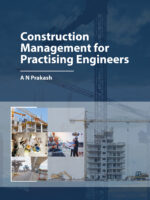A N Prakash, BE (Civil), MTech (Structures) is a pioneer of Construction Project Management in India, with a professional journey spanning over five decades across India, East Africa, and the Middle East.
He introduced the concept of Construction Project Management in the Indian context, laying the foundation for a more structured, process-oriented approach to project execution. Today, his firm A N Prakash Construction Project Management Consultants Private Limited is nationally recognized for its contribution to the building industry.
Mr Prakash has guided and trained numerous engineers and project managers. He founded the School of Construction Management Excellence to institutionalize this effort. He has co-authored influential papers such as Emergent Project Management (IJPM), Fostering a Culture of Knowledge Sharing (HICSS), and An Ontological Framework for CPM Systems (PMI India Conference). He is a Fellow of RICS and ACCE (India), and a Member of PMI (USA), ASCE, and ICI.
-
Construction Management for Practising Engineers
₹850.00Author: A N Prakash
This book is a practical and insightful guide that bridges the gap between academic theory and on-site realities in Construction Project Management. The author shares real-life anecdotes, case studies, and professional reflections that illustrate core concepts like project planning, scheduling, quality control, contract administration, and risk management. Written for young graduates, field engineers, quantity surveyors, and project leads, the book addresses common challenges in adopting CPM practices particularly the complexity of Work Breakdown Structures (WBS), bar charts, earned value management (EVM), resource planning, and cost control.
What sets this book apart is its ability to blend engineering insight with inspiration drawn from literature, poetry, and ancient texts highlighting the importance of observation, curiosity, and decision-making in the life of a construction professional. Beyond the structured phases of a project from feasibility and design development to execution and handover, the book explores ‘field engineering’ as a distinct domain, focusing on constructability, sequencing, interface coordination, and site-based problem-solving. It also highlights the significance of people management, soft skills, and humour in handling teams and stakeholders.
Annexures provide ready-to-use templates, RFI formats, and site documentation tools reinforcing the importance of SOPs and record-keeping. This book is both a technical companion and a mentor-in-print for construction professionals.
Interested readers may write to us at mup@manipal.edu about purchasing the book.
Also available on

eBook available on


